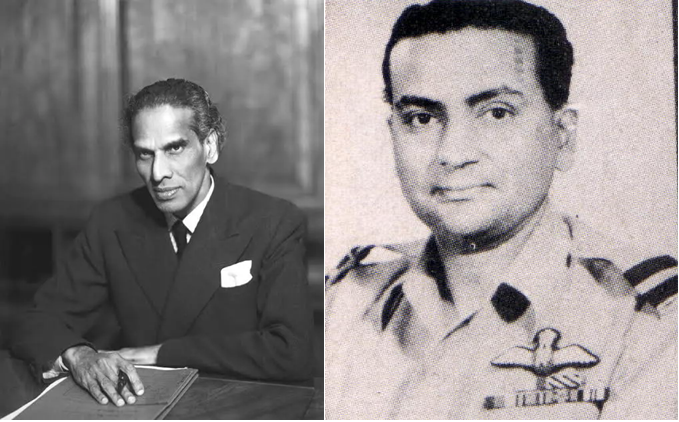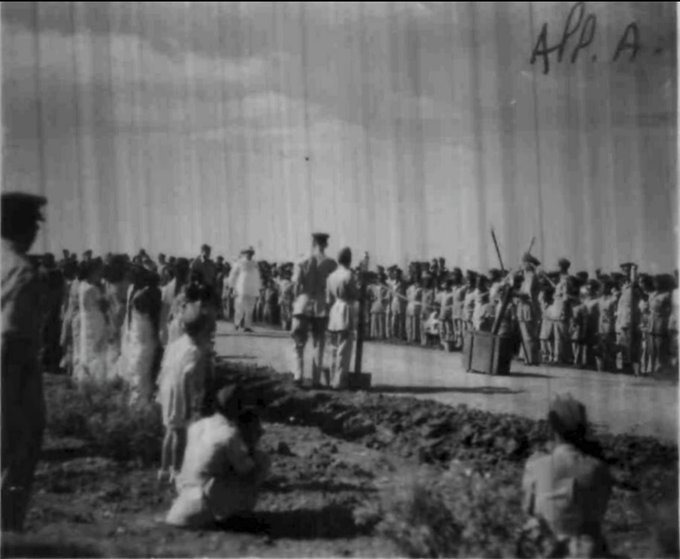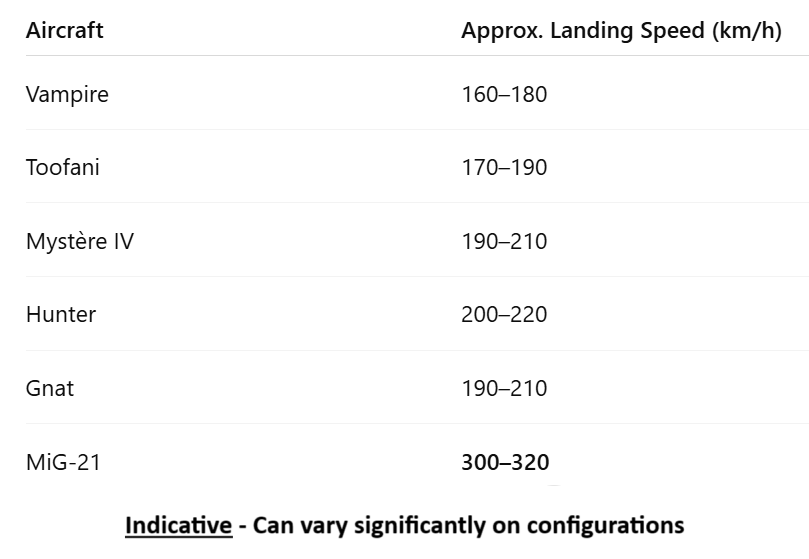The story of how the first chief of the @IAF_MCC came about to be decided on. A period of 30 days in June/July 1947, hectic negotiations and parleys, and a surprise twist by later to be @IAF_MCC's first Indian Chief Subroto Mukerjee. #IAFHistory (1/16) 

Three questions needed answering - Will there be a chief for each service or one commander-in-chief? What rank will the officer tenant? Who will be the officer?
All of these were being deliberated in parallel and Air Mshl Hugh Walmsley, AOC-in-C India set the ball rolling 2/
All of these were being deliberated in parallel and Air Mshl Hugh Walmsley, AOC-in-C India set the ball rolling 2/

On 1 July 47, he sent his recommendations to Loud Louis Mountbatten, though the ultimate decision rested with Nehru and Jinnah respectively. Also, a key influencer in the process was Claude Auchinleck, then Commander-in-Chief of the Indian Army. 3/ 

The name of Air Mshl Sir Thomas Elmhirst to be the Chief of @DGPR_PAF , seems to have been at the insistence of General Auchinleck who wrote the attached letter directly to Mountbatten on the recommendation. 4/ 

Lord Mountbatten quickly moved the ball forward but made it clear that if Elhmirst is to be considered, he should be considered for India too. This would turn out to have a major impact eventually. 5/ 

Air Mshl Walmsley would lead the deliberations. On 10 July 47, Mountbatten informed him that both India and Pakistan had agreed to have an Air Officer Commanding from the RAF, of the rank of Air Vice Marshal. This surprised Walmsley, as Mukerjee would be knocked out. 6/ 

Not only did Walmsley find this shocking, he thought Mukerjee would be shocked too. This implies that the brass felt that Mukerjee had positioned himself as the defacto choice for the Indian Air Force's top job. 7/ 

All factors put together, including the fact that not too many RAF officers were keen to volunteer for the job, Walmsley did find the most suitable officer for India (given his boundary conditions) - AVM Perry-Keene. 8/ 

AVM Perry-Keene was a fine choice because he had spent considerable time in India across roles from 1935 and was reasonably well known amongst officers in India 9/ 

At Walmsley's insistence on 18 July 47, Mountbatten met with Mukerjee and was surprised at his views - Mukerjee put the needs of the service above his & was supportive of a senior RAF officer. He was concerned about parity with Army and hoped to be Chief in 2-3 years. 10/ 

Mukerjee was aligned with Mountbatten, Walmsley, and Perry-Keen and it seemed on 22nd July 47, Perry- Keen would make the Chief of the IAF, but a twist was in the offing. 11/ 

On 21st July, Nehru wrote to Mountbatten encouraging him to consider Air Mshl Elhmirst for IAF. Apart from him and his Defence minister's opinion, it seems Auchinleck would have weighed in as well, being close to Nehru and held in high esteem by him. 12/ 

On 23 July 47, Mountabetten had arranged for a meeting between Nehru and Elhmirst, so that the latter could be convinced for the job. This though meant that the rank of the chief would no longer be AVM, but Air Marshal, atleast for IAF. 13/ 

Nehru was able to convince Elhmirst on the 26th of July, and it was decided for him to become chief. While Mukerjee had his wish of having an Air Mshl, at par with the Army, come true, unknown to him then, he would have to wait 7 years to become Chief himself as Air Mshl. 14/ 

In parallel, Mountbatten aligned Jinnah to have a very capable and willing AVM Perry-Keen be the Chief of PAF. 15/ 

On 27 July 1947, the announcement was made. IAF was to have Air Marshal Elhmirst as its first Chief and Air Vice Marshal Perry-Keen as the first chief of PAF. 16/16 

• • •
Missing some Tweet in this thread? You can try to
force a refresh






















